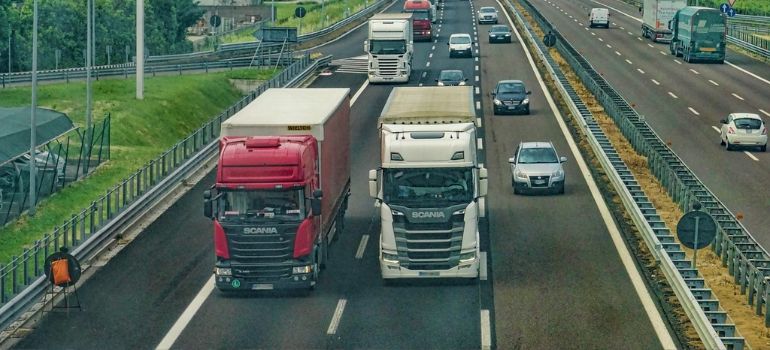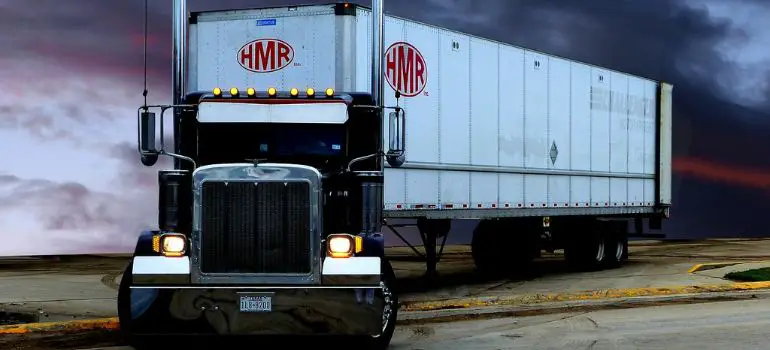Introduction
When it comes to transporting goods on a trailer, ensuring that your cargo is well-protected from the elements is of paramount importance. This is where tarping a trailer comes into play. In this comprehensive guide, we will walk you through the process of tarping a trailer efficiently and effectively. Whether you’re a seasoned trucker or a newbie in the world of cargo transportation, this article will provide you with the knowledge and skills needed to keep your cargo safe and secure.
Why Tarping Matters
Before we dive into the step-by-step process, let’s understand why tarping is crucial:
Protection from Weather
Exposing your cargo to rain, snow, or UV rays can lead to damage and spoilage. Tarping safeguards your goods against these elements.
Safety First
Tarping ensures that your cargo stays in place during transit, reducing the risk of accidents and debris falling onto the road.
Legal Compliance
Many regions require cargo to be covered during transportation to prevent littering and accidents. Tarping helps you comply with these regulations.
Getting Started: Gathering Your Materials
Before you start tarping, gather the necessary materials:
Materials Checklist
- Tarp: Ensure you have a high-quality tarp that is large enough to cover your entire cargo.
- Bungee Cords or Straps: These will be used to secure the tarp in place.
- Gloves: Protect your hands from sharp edges or rough surfaces.
- Ladder: If your trailer is tall, a ladder will be handy for reaching the top.
- Rope: In case you need extra securing.
Step 1: Park Safely
Park your trailer on level ground and engage the brakes. This ensures stability during the tarping process.
Step 2: Unfold the Tarp
Spread the tarp over your cargo evenly, ensuring that it covers the entire load.
Step 3: Secure the Tarp
Use bungee cords or straps to secure the tarp. Start at one end and work your way to the other, ensuring a tight fit.
Step 4: Tug and Adjust
Tug gently on the tarp to remove any wrinkles or slack. Make sure it’s taut and snug against the cargo.
Step 5: Extra Security
For added security, tie down any loose ends or corners with ropes. This prevents the tarp from flapping in the wind.
Step 6: Check for Gaps
Inspect the entire setup for any gaps or openings. Ensure that no part of your cargo is exposed.
Step 7: Test the Stability
Give your cargo a gentle shake to test the stability of the tarp. It should stay firmly in place.
Step 8: Double-Check
Before hitting the road, double-check all the securing points and make any necessary adjustments.
Additional Tips for Effective Tarping

While the steps mentioned earlier provide a solid foundation for tarping your trailer, here are some additional tips to enhance your tarping skills:
Invest in Quality Tarps
Quality matters when it comes to tarps. Investing in durable, waterproof tarps can save you money in the long run by protecting your cargo effectively.
Use Corner Protectors
To prevent the tarp from tearing at the sharp corners of your cargo, use corner protectors. These simple accessories can significantly extend the life of your tarp.
Consider Edge Protectors
In addition to corner protectors, consider using edge protectors to safeguard the edges of your cargo. This is especially important for delicate or easily damaged goods.
Know the Weight Limits
Make sure you are aware of the weight limits for your tarp and securing materials. Overloading can lead to tarp damage or failure.
Check the Weather Forecast
Before you embark on your journey, check the weather forecast for the entire route. This will help you anticipate any weather challenges and prepare accordingly.
Secure the Tarp Properly
Ensure that every part of the tarp is securely fastened. Pay special attention to the corners and edges, as these are vulnerable areas.
Use Adequate Lighting
If you need to tarp your trailer in low light conditions, ensure you have proper lighting to see what you’re doing. This will help you avoid accidents and mistakes.
Train Your Team
If you have a team assisting you with tarping, make sure they are well-trained and understand the importance of a secure tarp job. Proper communication and coordination are key.
Proper Maintenance of Tarps
To ensure the longevity and effectiveness of your tarps, it’s essential to perform regular maintenance:
Clean Your Tarps
After each use, clean your tarps to remove dirt, debris, and any chemical residues that may have accumulated during transportation. Use a gentle detergent and a soft brush to avoid damaging the fabric.
Inspect for Damage
Regularly inspect your tarps for signs of wear and tear, such as rips, holes, or weakened seams. Address any issues promptly to maintain the integrity of the tarp.
Repair or Replace
If you find any damage during your inspections, repair it immediately using patch kits or sewing kits designed for tarps. For extensive damage, consider replacing the tarp to ensure continued protection.
Tips for Tarping Specific Cargo
Tarping requirements may vary depending on the type of cargo you are transporting. Here are some tips for tarping specific types of loads:
Bulk Cargo (Grains, Sand, etc.)
For loose bulk cargo, use a tarp with flaps that can be secured over the sides of the trailer. This prevents spillage during transit.
Heavy Machinery or Equipment
When transporting heavy machinery, use additional straps and corner protectors to distribute the weight evenly and protect the tarp from sharp edges.
Delicate Goods (Fragile or High-Value Items)
Extra care is needed when tarping delicate goods. Use padded or specialized tarps and consider double-layering for added protection.
Tall or Overhanging Cargo
For cargo that exceeds the height of the trailer, invest in extension kits for your tarps to cover the entire load effectively.
Hazardous Materials
When transporting hazardous materials, ensure that your tarps are chemical-resistant and meet all safety regulations.
Environmental Considerations
Tarping not only protects your cargo but also has environmental benefits:
Preventing Littering
Tarping helps prevent debris from falling onto the road, reducing littering and environmental pollution.
Reducing Air Pollution
Covering your cargo with a tarp reduces wind resistance, leading to better fuel efficiency and reduced emissions from your vehicle.
Compliance with Environmental Laws
Many regions have strict environmental laws regarding cargo transportation. Tarping your load ensures compliance and minimizes the risk of fines.
Conclusion
Tarping a trailer is a vital skill for anyone involved in cargo transportation. It not only protects your cargo from the elements but also enhances safety and ensures compliance with regulations. By following the steps outlined in this guide, you can tarp your trailer like a pro, keeping your cargo safe and secure throughout the journey.
FAQs
Tarping is essential for protecting most types of cargo from weather and road debris. However, some smaller items or specialized loads may not require tarping.
No, it’s essential to use a tarp in good condition. Holes or tears can compromise the protection provided by the tarp.
It’s a good practice to check the tarp and securing points whenever you make a stop or every few hours to ensure it remains secure.
Regulations regarding tarping may vary by region. It’s essential to be aware of and comply with local and federal laws regarding cargo transportation.
Yes, high-quality tarps can be reused for multiple trips as long as they remain in good condition and provide adequate protection for your cargo.



